“The loneliest moment in someone’s life is when they are watching their whole world fall apart, and all they can do is stare blankly”
― F. Scott Fitzgerald
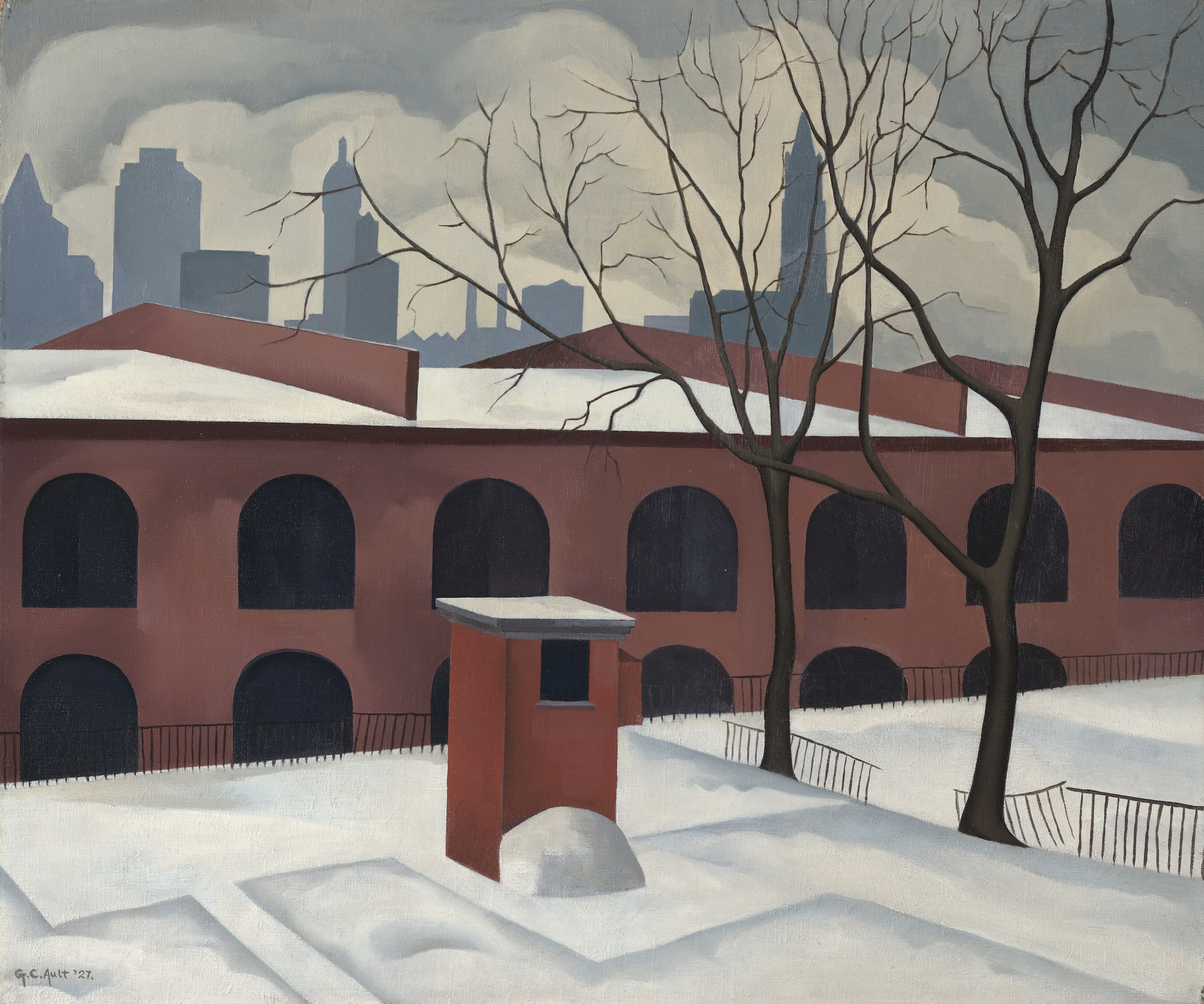
George Ault (October 11, 1891 – December 30, 1948) was on the outside but rather than banging on the widows, he withdrew a pace and watched in silence, an artist with what poet Charles Bukowski called “this terrible itch for solitude”.
Ault shares his view of looking in at the America of factories, business, homes and machine-processed things through his realistic paintings. His America is quiet and still, where the lonely everyday beauty of the world is ‘caught in a moment of absolute stillness and ever so slightly abstracted’. Often it’s night and we’re looking at the clear, smoothed, clean-edged, flat-toned buildings in a chiaroscuro of shadow and a single artificial street light. “The setting is the same in each case,” writes Roberta Smith in The New York Times, “a solitary streetlight, the same bend in the road, the same collection of barns and sheds – but seen from different vantage points. In them, Ault has summoned up the poetry of darkness in an unforgettable way – the implacable solitude and strangeness that night bestows upon once-familiar forms and places.” His solitude is felt keenly in the series of five paintings based on Russell’s Corners from different vantage points, four at night when the place is punctured by a “piercing seemingly sourceless light”. Sanford Schwartz notes in the The New York Review of Books: “Ault fine-tunes your eyes. He makes you aware of delicate light effects that happen, as it were, behind your back.”
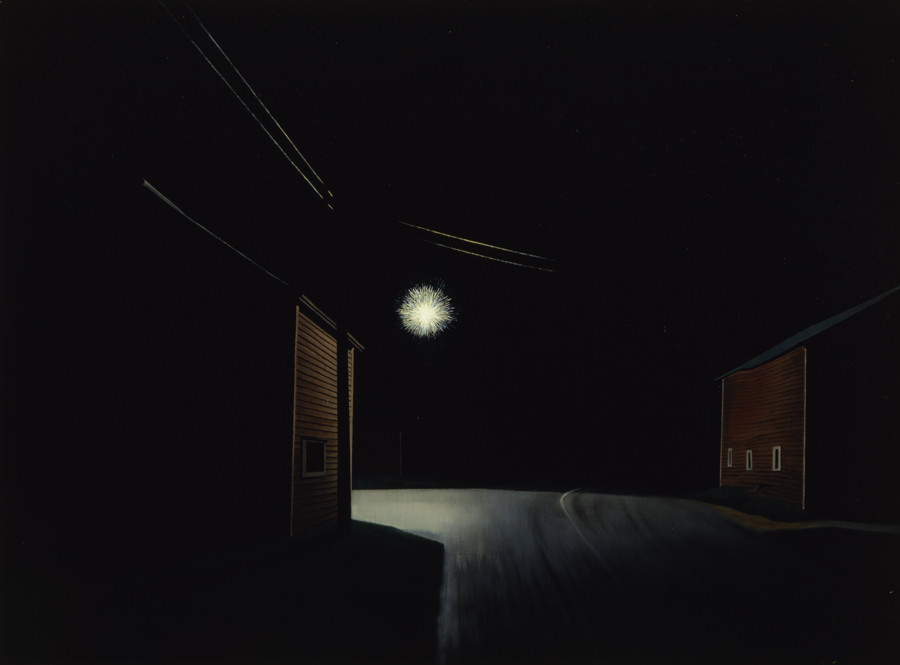
August Night at Russell’s Corners, somewhere near Woodstock New York – by George Ault (1940)

Black Night: Russell’s Corners near Woodstock, New York by
George Copeland Ault – 1943
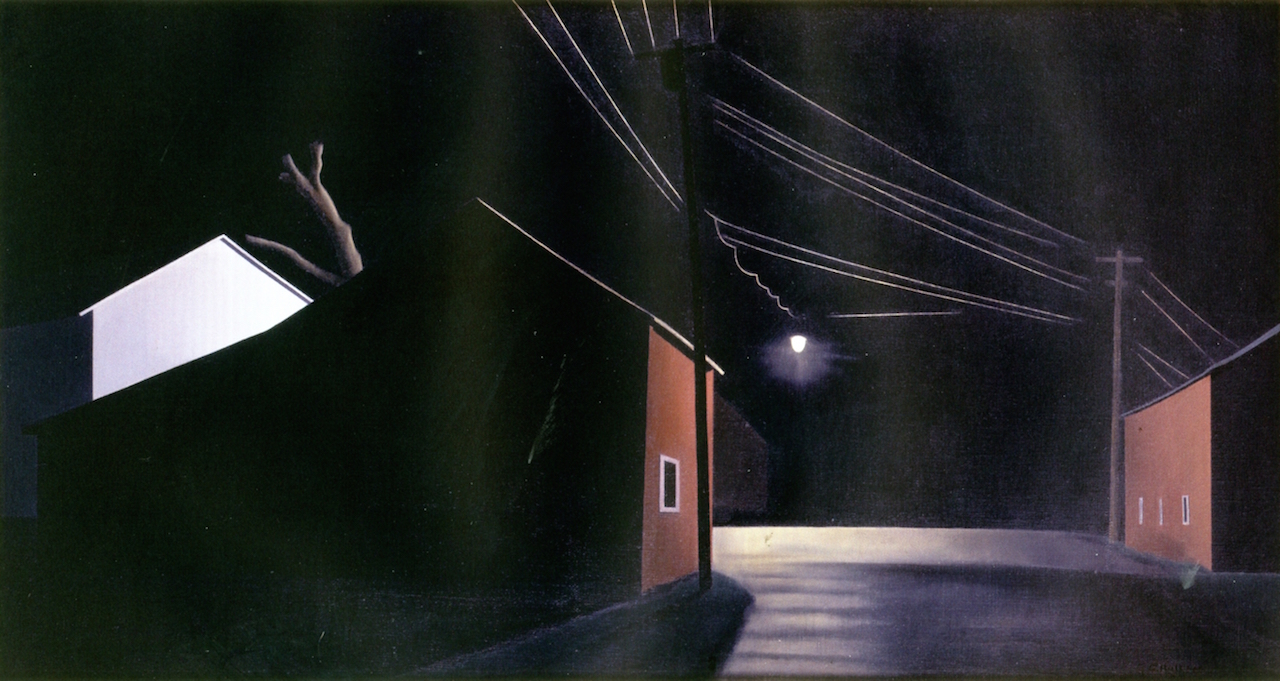
Night at Russell’s Corners – 1946

Bright Light at Russell’s Corners by George Ault – 1946
Born in Cleveland, Ohio in 1891, three of George Ault’s four siblings committed suicide. In 1915 his favourite brother,
Harold, died in a suicide pact with his spouse. The Wall Street crash of 1929 contributed to the suicides of his two remaining brother. Ault’s father died that same year. Rheumatic fever prevented George from attending school until the age of eight. After his mother died in a mental institution, Ault became an alcoholic. Ault was discovered dead five days after drowning in the Sawkill Brook when he had taken a solitary walk in stormy and dark weather. The death was deemed a suicide by the coroner. You want a reason for an artist to feel alone and alienated? Well, Ault could cite several.
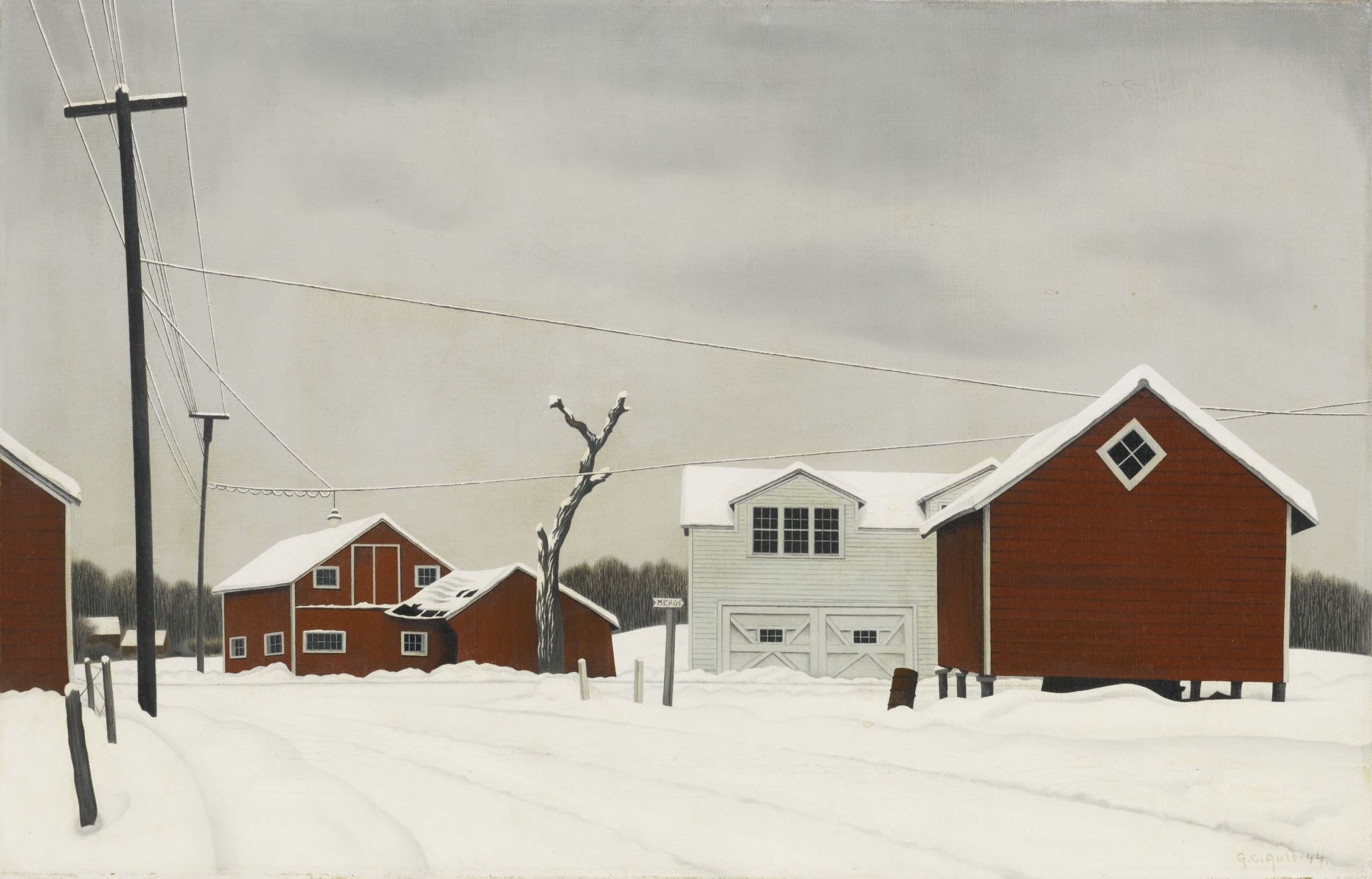
Daylight at Russell’s Corner -1944
Things had begin well enough. Work in the family’s printing ink business took the Aults to Europe, and they had means enough for George to travel to study at University College School, London, and that city’s Slade School of Art and St John’s Wood School of Art. In 1911, he retuned to the US and spent the rest of his life in New York and New Jersey. In 1929, the Stock Market crash ruined the family. For him panting aimed to “create order form chaos”. New York’s skyscrapers were his “tombstones of capitalism”; industrialised America was “the Inferno without the fire”.
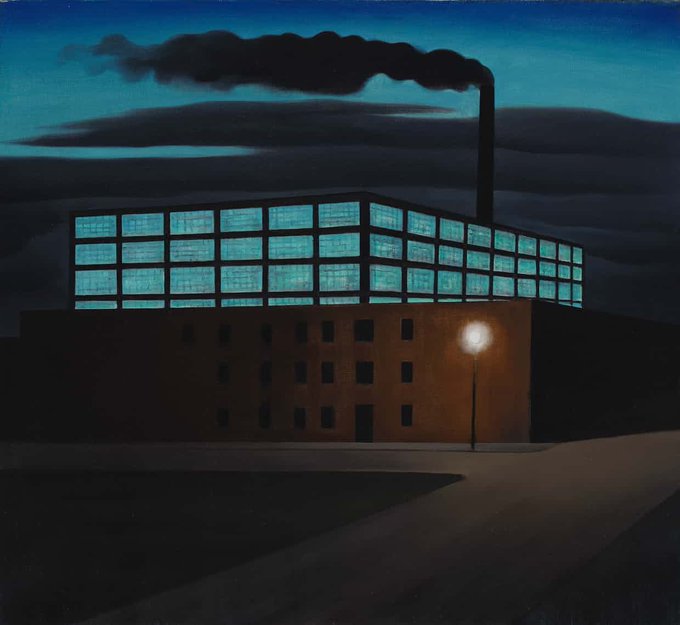
George Ault, Hoboken Factory, 1932.
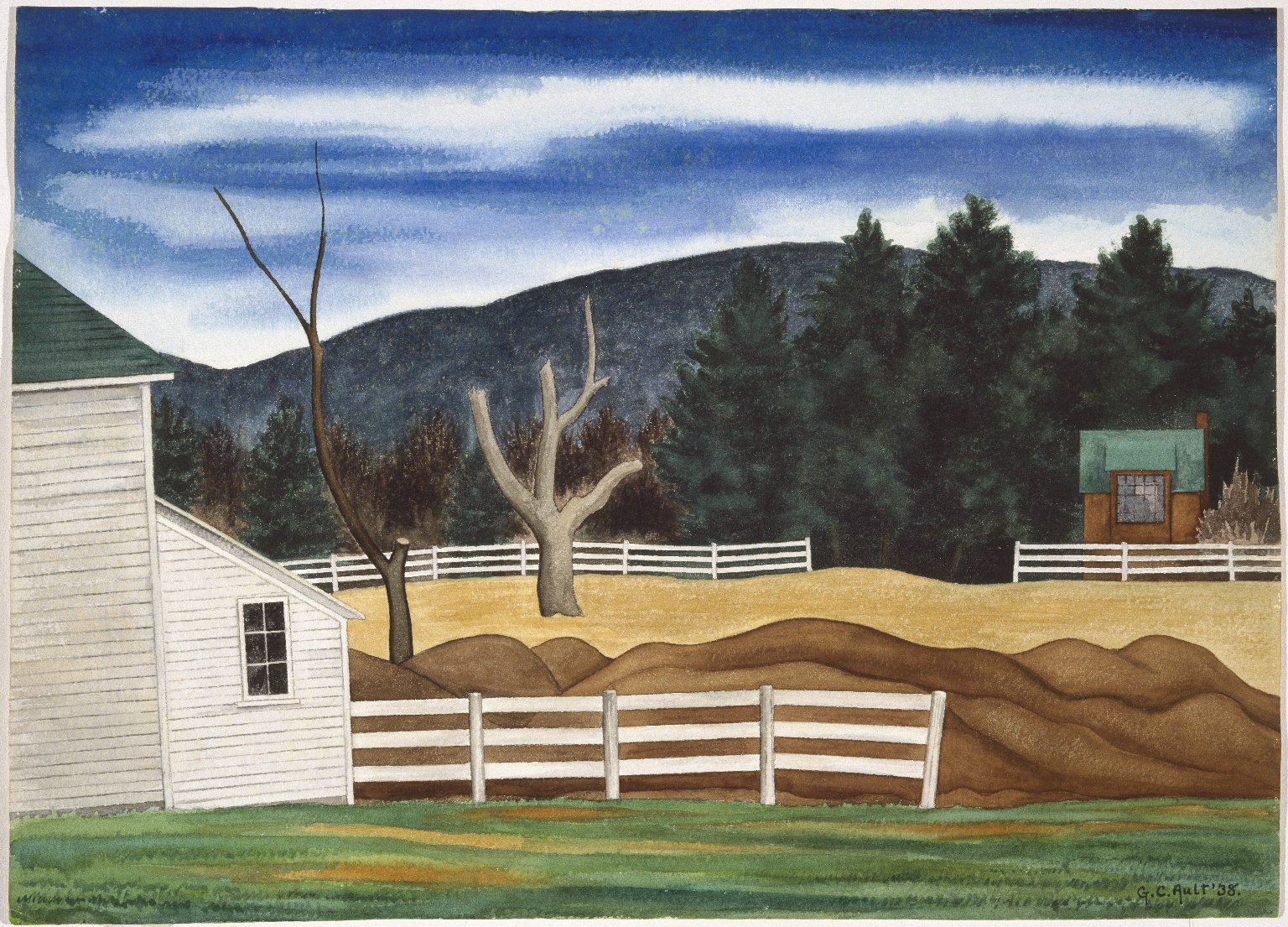
George Copeland Ault (American, 1891-1948). Woodstock Landscape, 1938. Watercolor over graphite on cream-colored, very thick, rough textured wove paper
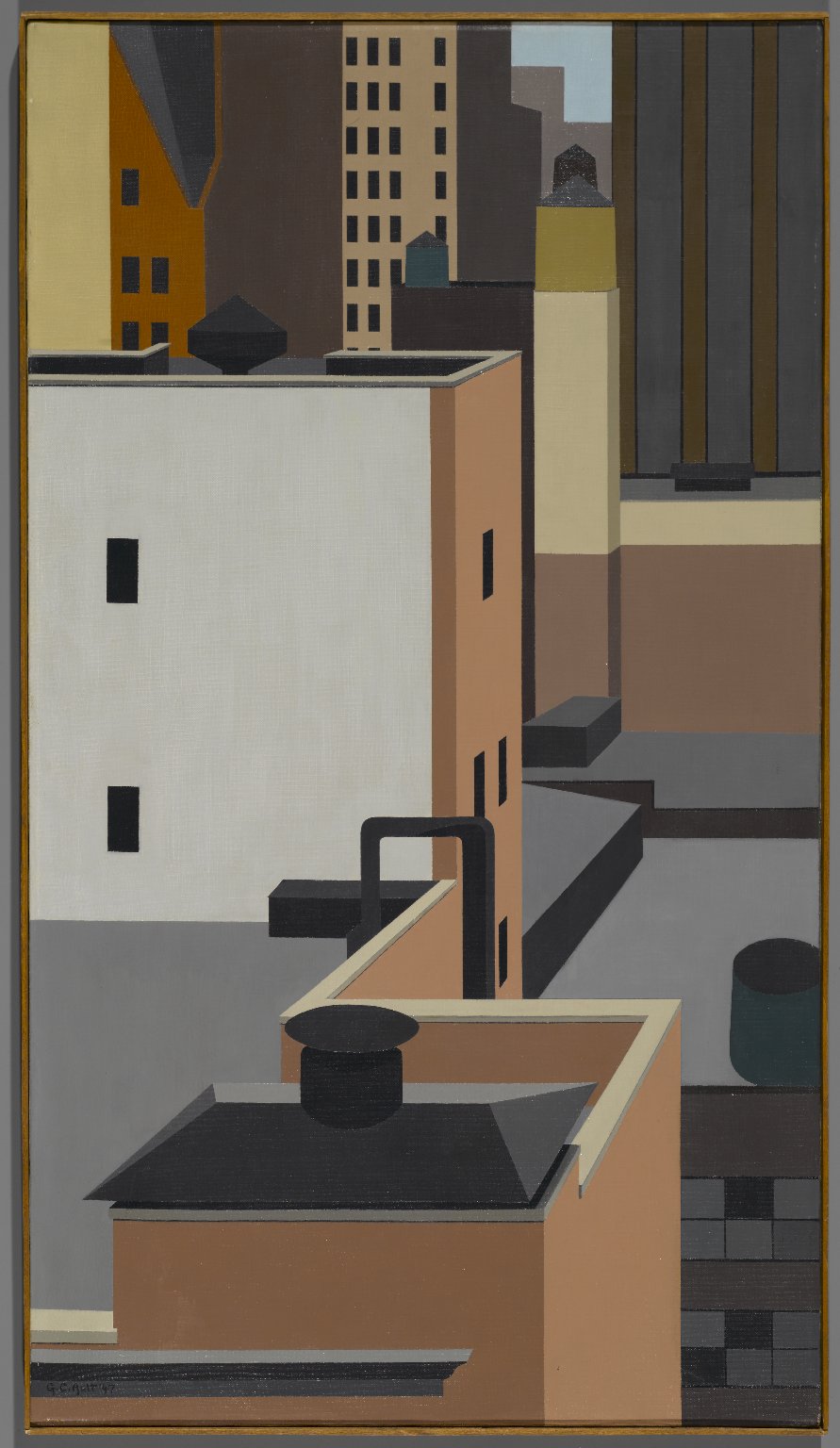
George Copeland Ault (American, 1891-1948). Manhattan Mosaic, 1947. Oil on canvas
![George Ault - New Moon, New York [1945]](https://flashbak.com/wp-content/uploads/2020/03/ault.png)
George Ault – New Moon, New York [1945]

George Ault – View from Brooklyn (1927)

1938
watercolor and pencil on paper
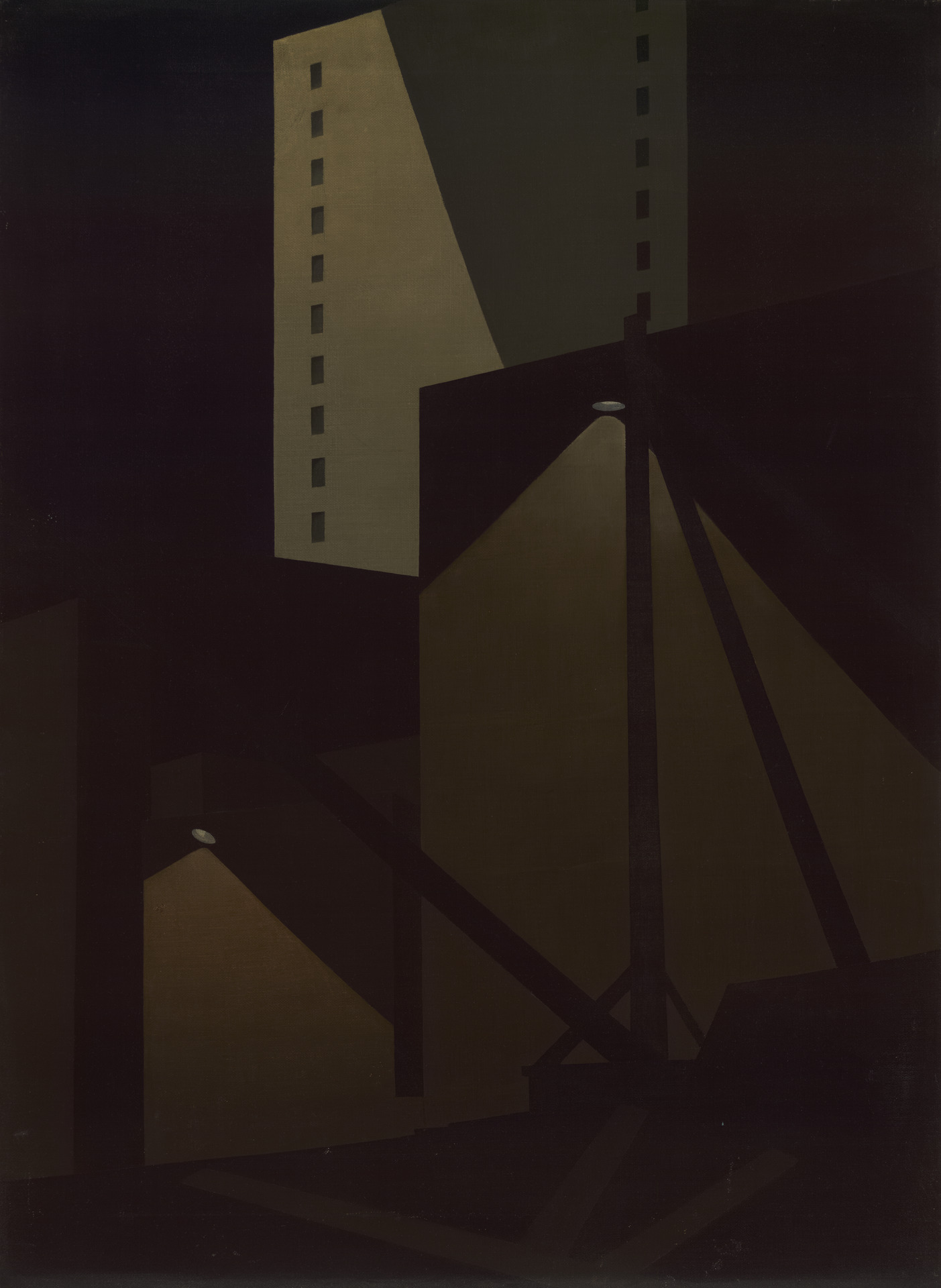
Construction Night by George Ault (1923)
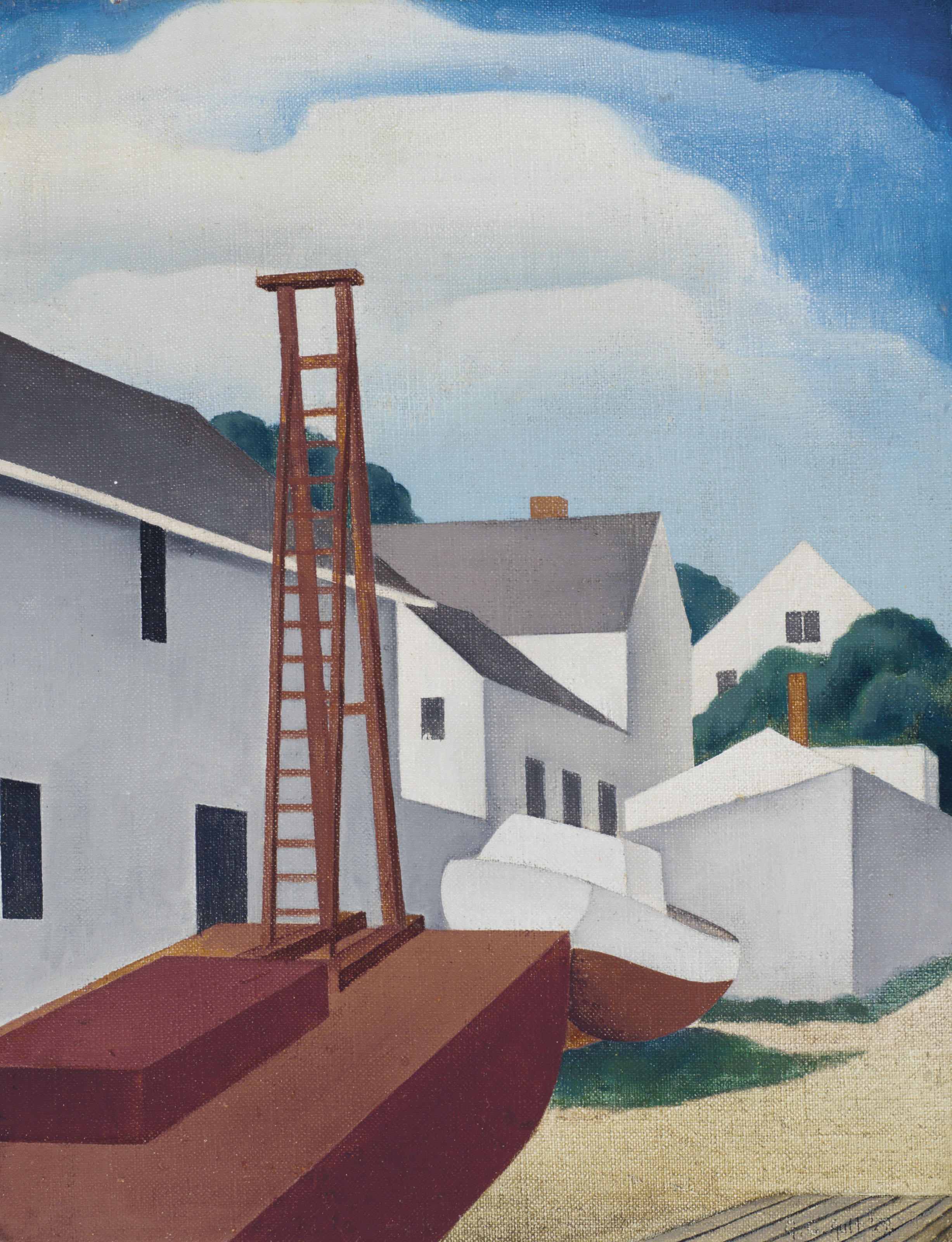
George Copeland Ault (1891-1948)
Pile Driver
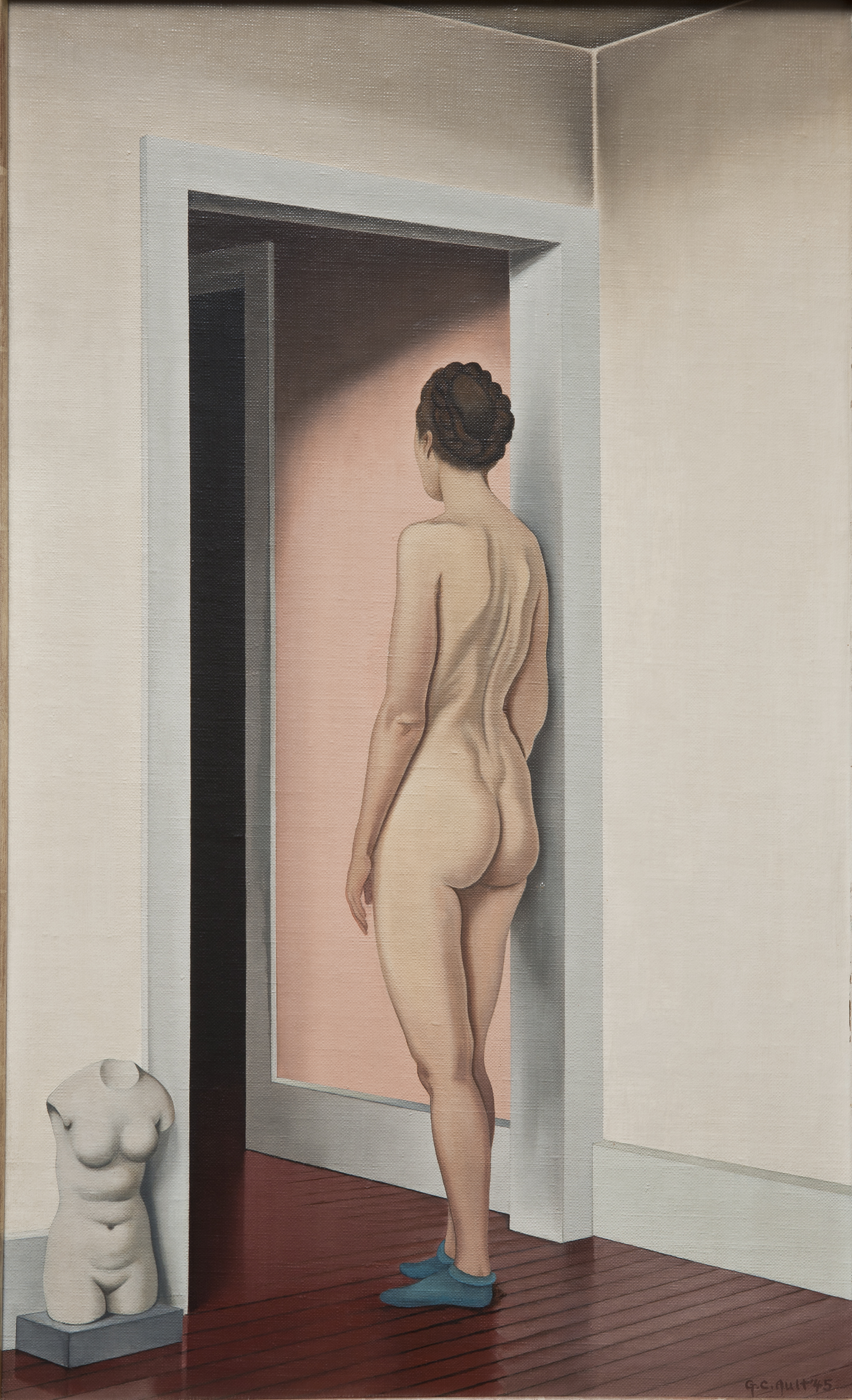
Nude and Torso – 1945. Louise Jonas, Ault’s second wife.
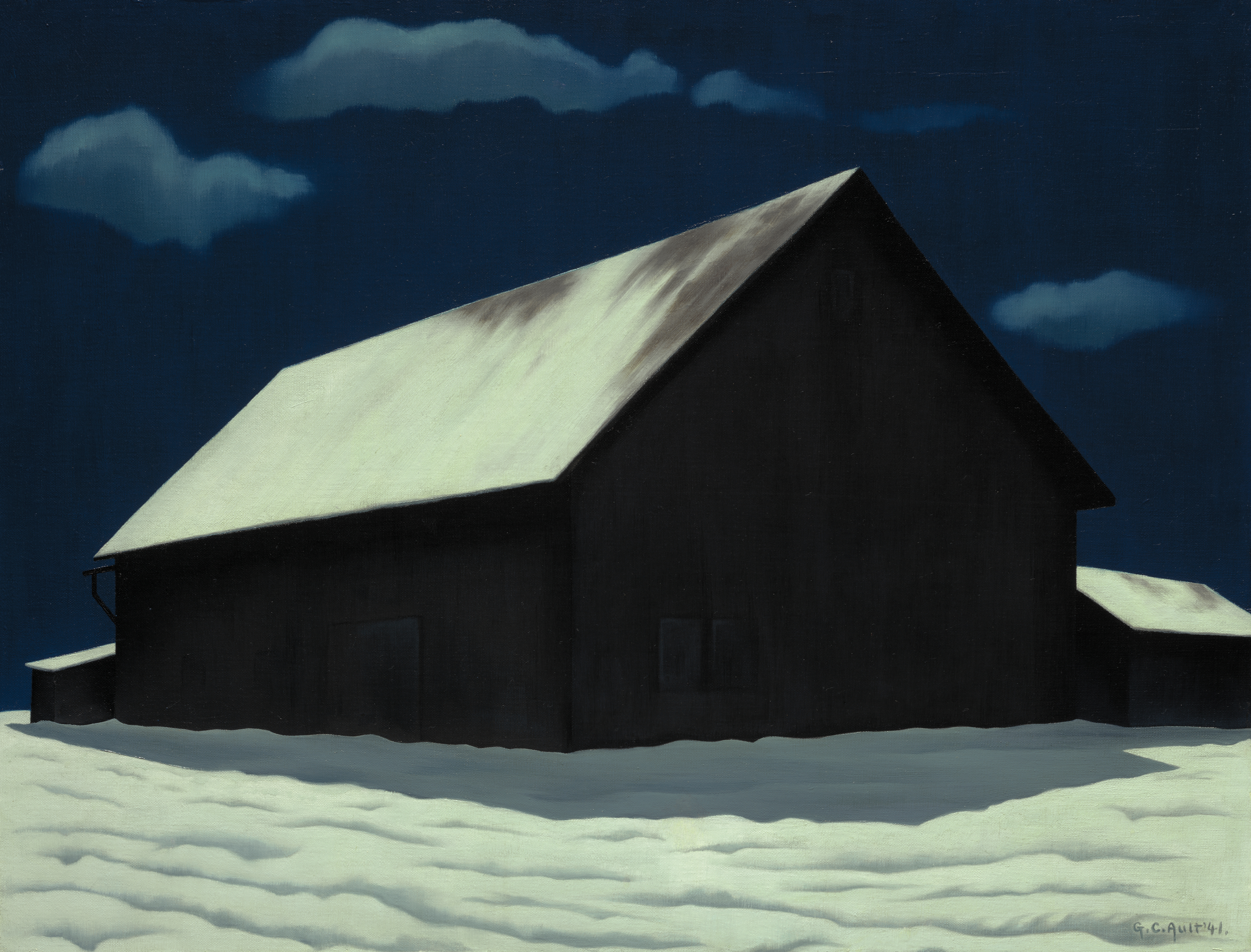
January Full Moon – 1941
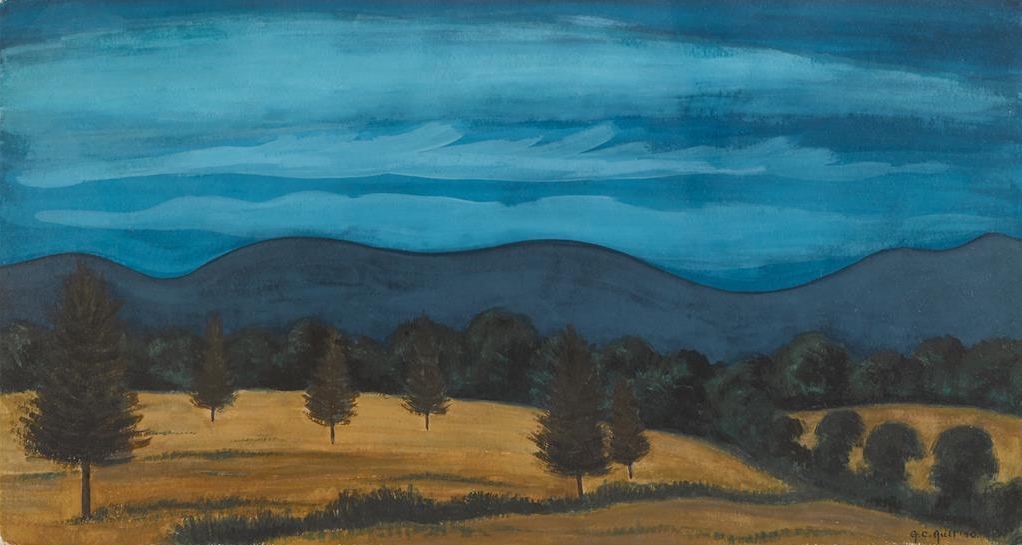
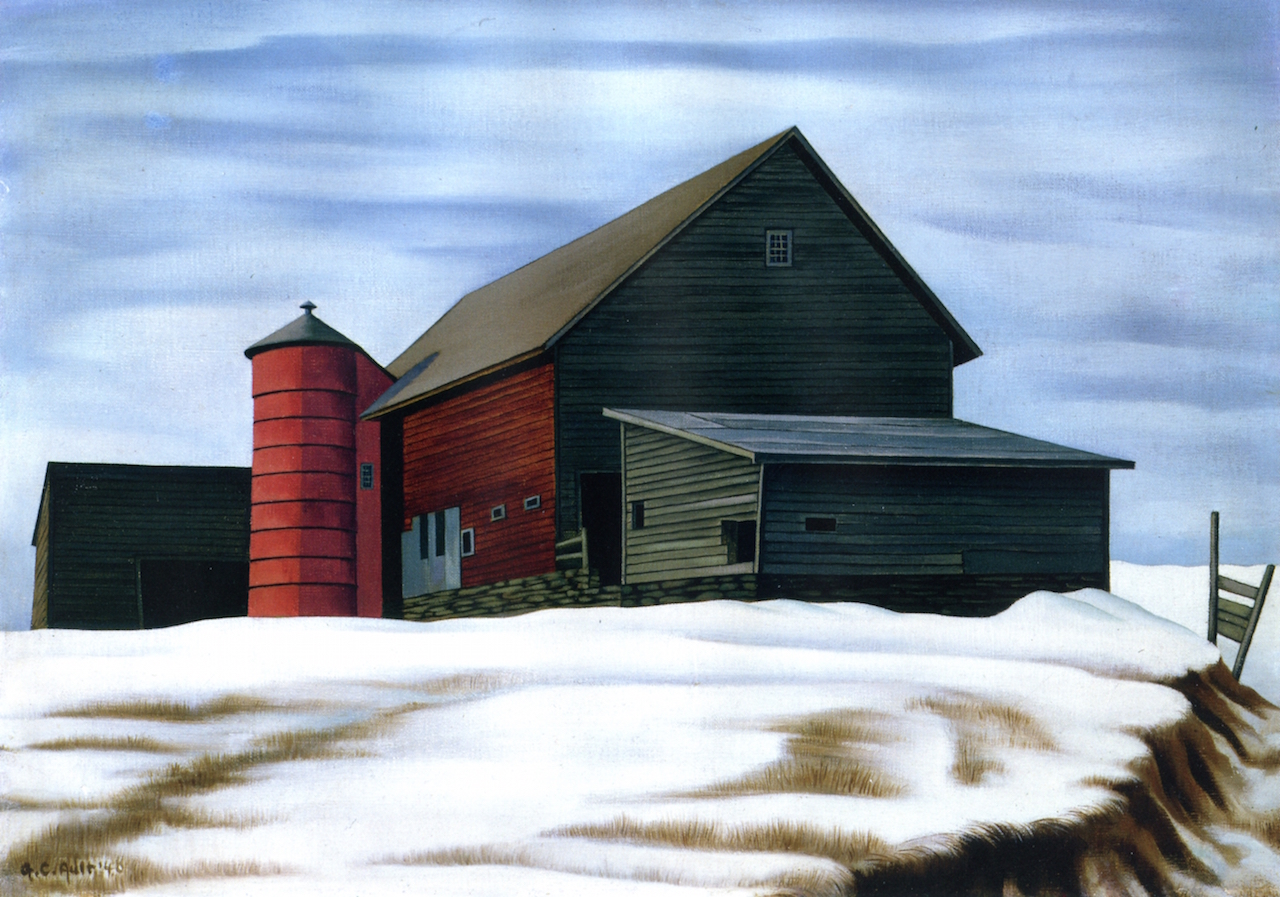
The Rick’s Barn, Woodstock
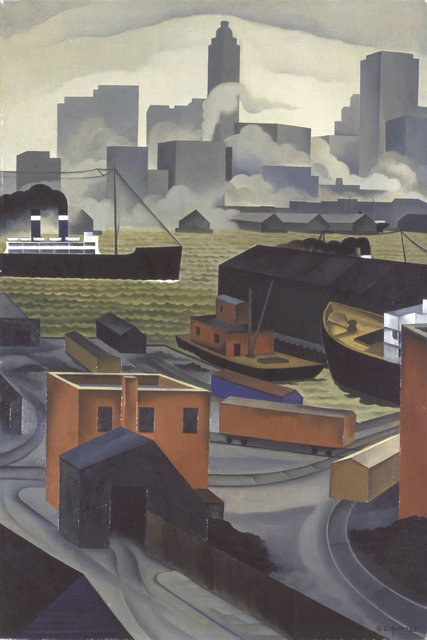
From Brooklyn Heights
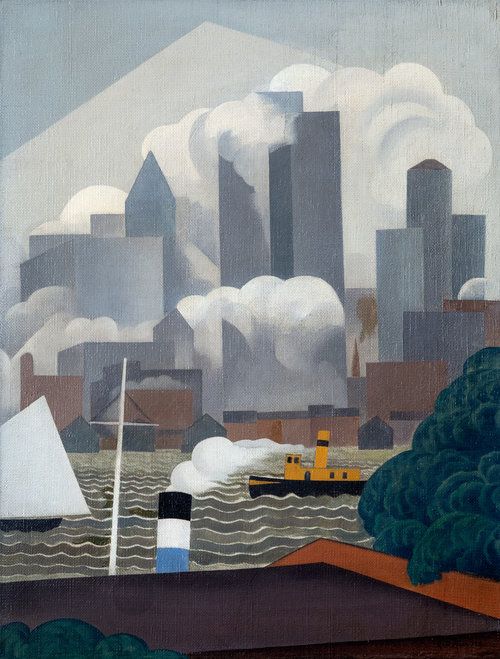
“East River,” George Ault, 1925, oil on canvas
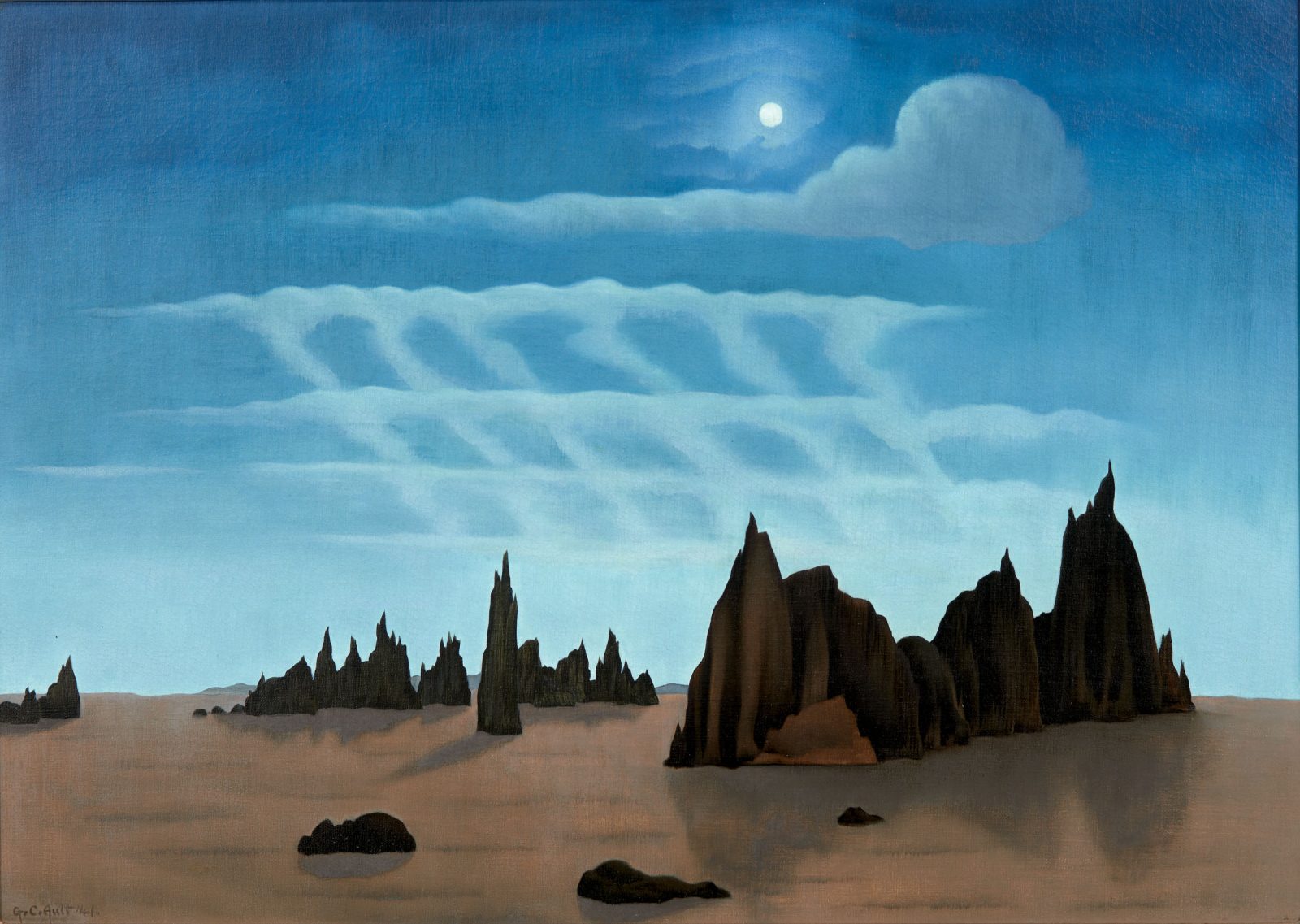
Moonlit Desert, 1941
Oil on canvas
20 x 28 inches
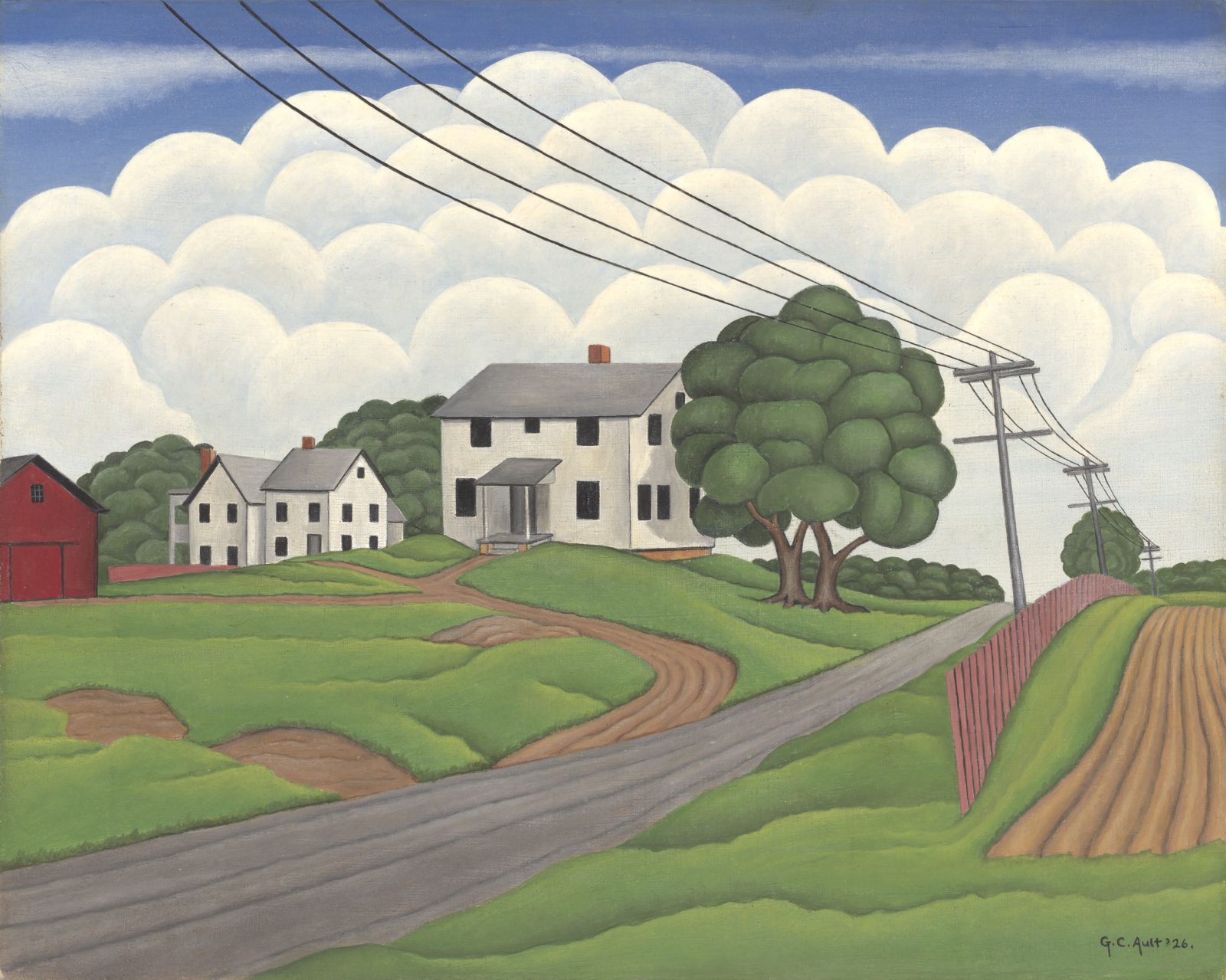
George Copeland Ault
American, 1891–1948
Country Lane, 1926
Oil on canvas
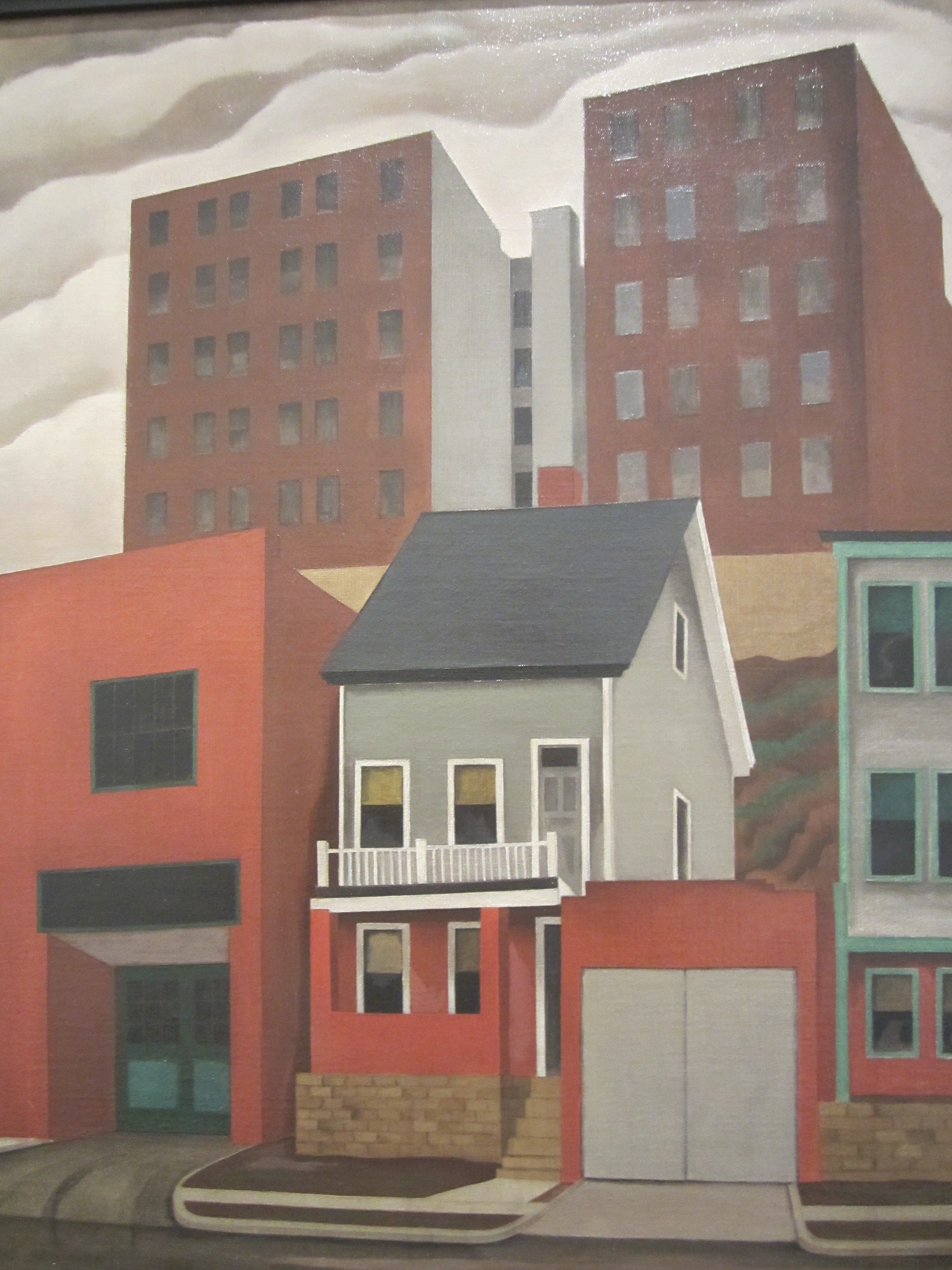
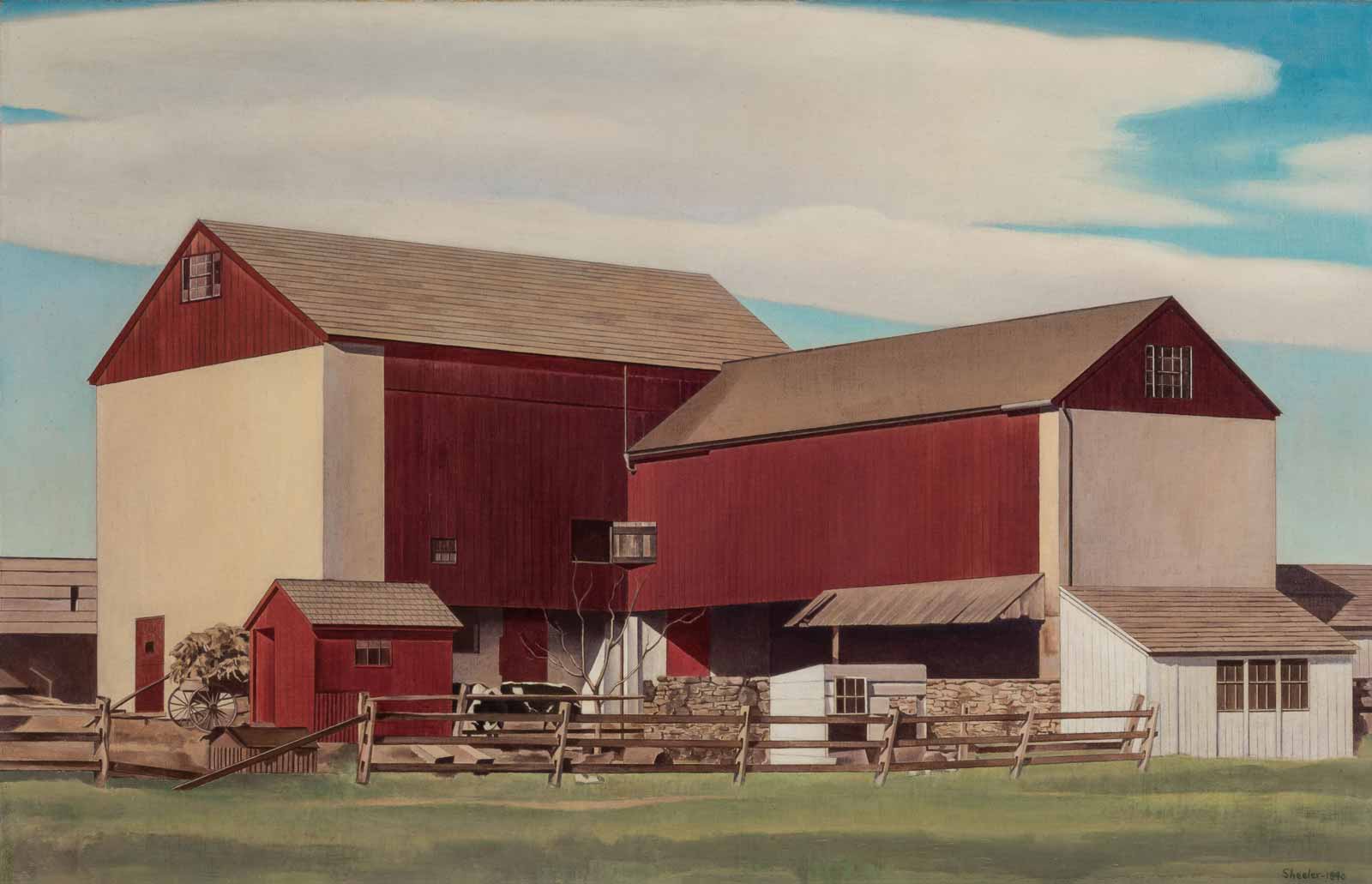

Morning in Brooklyn –
1929
George Ault left no journals or papers. In 1978 his widow, Louise, compiled her reminiscences of their life together in a book entitled Artist in Woodstock. George Ault: The Independent Years. This publication, along with her preparatory notes, on file at the Archives of American Art, are the primary sources of information on Ault’s life.
Lead Image: George Ault – View from Brooklyn, New York (1927).
Would you like to support Flashbak?
Please consider making a donation to our site. We don't want to rely on ads to bring you the best of visual culture. You can also support us by signing up to our Mailing List. And you can also follow us on Facebook, Instagram and Twitter. For great art and culture delivered to your door, visit our shop.

